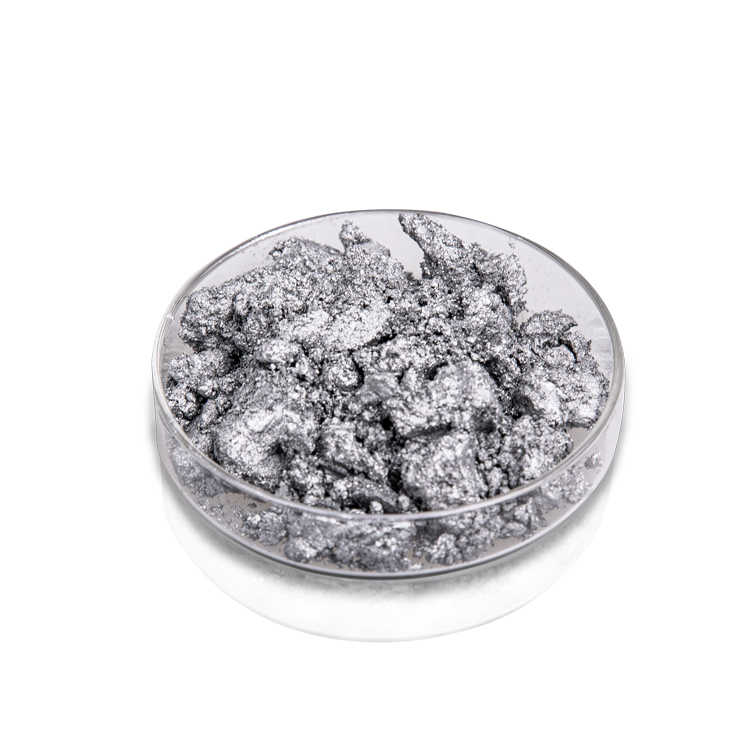Tackling the Challenge of Rough Aluminum Paste Coatings: A Comprehensive Guide
2025 / 10 / 30When working with aluminum paste for coatings, achieving that perfect smooth, mirror-like finish can sometimes be challenging. Many manufacturers encounter issues with rough textures or gritty particles that compromise both the appearance and performance of their products. Understanding what causes these problems – and how to prevent them – is crucial for producing high-quality metallic finishes.


Understanding the Problem: What Causes Roughness?
Several factors can contribute to gritty or rough textures in aluminum paste coatings:
Improper Dispersion
One of the most common culprits behind rough coatings is inadequate dispersion of the aluminum paste within the coating formulation. When aluminum flakes aren't properly broken down and distributed, they can form clusters that create a rough, uneven surface texture. This often happens when:
-
Mixing time is insufficient
-
Incorrect mixing equipment is used
-
The paste is added too quickly to the formulation
Particle Contamination
Foreign particles finding their way into your aluminum paste or coating formulation can create noticeable rough spots. These contaminants might come from:
-
Unclean manufacturing equipment
-
Poor quality raw materials
-
Environmental dust and debris
-
Improperly cleaned containers
Flake Damage
Aluminum flakes are delicate structures that can easily become damaged during processing. When flakes break or deform, they lose their ability to lay flat and create that smooth, reflective surface. Common causes include:
-
Excessive shear during mixing
-
Rough handling during transportation
-
Improper storage conditions
Identifying the Specific Issue
Before implementing solutions, it's important to correctly identify which type of roughness you're dealing with:
Gritty Texture
If the coating feels sandy or gritty to the touch, you're likely dealing with:
-
Contaminated materials
-
Poorly dispersed paste
-
Aggregated flakes
Orange Peel Effect
This bumpy, uneven appearance typically indicates:
-
Improper application techniques
-
Incorrect viscosity
-
Poor flake orientation
Visible Particles
If you can see individual particles in the dried coating, consider:
-
Filtration issues
-
Severe contamination
-
Poor compatibility between materials
Practical Solutions for Smoother Finishes
Optimize Your Mixing Process
Proper dispersion is key to smooth aluminum paste coatings. Implement these practices:
-
Use appropriate mixing equipment that provides both shear and circulation
-
Follow manufacturer-recommended mixing times and speeds
-
Consider pre-dispersing the paste in a portion of the solvent before adding other components
-
Avoid introducing air during mixing, as bubbles can create surface defects
Maintain Equipment and Environment
Contamination control is essential for smooth finishes:
-
Implement regular cleaning schedules for all equipment
-
Use proper filtration systems
-
Maintain clean room conditions where possible
-
Store materials in sealed, clean containers
Handle Materials with Care
Protect your aluminum paste from damage:
-
Follow recommended storage conditions
-
Avoid excessive shaking or rough handling
-
Use proper transfer methods between containers
-
Don't subject the paste to temperature extremes
Application Techniques Matter
Even with perfectly prepared aluminum paste, application methods can make or break your finish:
Spray Application Tips
-
Maintain consistent pressure and distance
-
Use appropriate nozzle sizes for your formulation
-
Apply multiple thin coats rather than one heavy coat
-
Ensure proper overlap between passes
Environmental Controls
-
Maintain consistent temperature and humidity
-
Control dust and airflow in the application area
-
Allow proper flash-off time between coats
Troubleshooting Common Scenarios
Scenario 1: New Batch, Rough Results
If you're experiencing roughness with a new batch of aluminum paste:
-
Verify storage and handling conditions
-
Check manufacturing date and shelf life
-
Test dispersion with different mixing parameters
-
Contact your supplier for technical support
Scenario 2: Intermittent Roughness
When problems come and go:
-
Review your process consistency
-
Check for equipment wear or contamination
-
Monitor environmental conditions
-
Maintain better batch-to-batch records
Scenario 3: Sudden Quality Change
If previously smooth coatings become rough:
-
Audit recent process changes
-
Check raw material quality
-
Verify equipment calibration
-
Review maintenance records
Prevention: Better Than Cure
Establishing robust processes can prevent most roughness issues:
Quality Control Measures
-
Implement incoming material inspections
-
Establish regular in-process quality checks
-
Maintain detailed batch records
-
Conduct regular equipment maintenance
Staff Training
-
Educate team members on proper handling techniques
-
Establish clear standard operating procedures
-
Encourage reporting of even minor quality issues
-
Provide regular refresher training
When to Seek Professional Help
Sometimes, roughness issues require expert intervention. Consider contacting your aluminum paste supplier when:
-
Problems persist despite process adjustments
-
You're switching to a new type of aluminum paste
-
You need help optimizing your formulation
-
Quality issues affect multiple production batches
The Role of Quality Aluminum Paste
Starting with high-quality aluminum paste from a reliable supplier like ZHANGQIU METALLIC PIGMENT makes solving roughness problems much easier. Quality paste typically features:
-
Consistent particle size distribution
-
Good dispersion characteristics
-
Reliable batch-to-batch consistency
-
Proper packaging and handling
Conclusion
Achieving smooth, professional finishes with aluminum paste requires attention to detail throughout the entire process – from material selection and storage to application and quality control. By understanding the common causes of roughness and implementing the solutions outlined above, manufacturers can consistently produce beautiful, high-quality metallic coatings that meet their customers' expectations.
Remember that prevention is always more effective than correction. Establishing good practices for handling, storing, and processing aluminum paste will save time, reduce waste, and ensure consistent results that showcase the true beauty of metallic finishes.
Most roughness problems are solvable with systematic troubleshooting and process improvement. Don't hesitate to leverage the technical expertise of your suppliers – they're valuable partners in achieving coating excellence.

